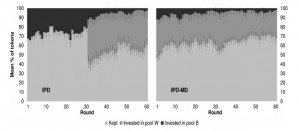CivilPolitics’ mission is to educate the public on evidence-based methods for improving inter-group dialogue, with evidence defined broadly to include academic studies, empirical studies of community interventions, and also the practical wisdom learned by organizations that are bringing people together in the community. As part of this last area of evidence, we are asking our partners in the community to answer a set of semi-standardized questions designed to help us learn the common themes that run through successful community work. If you would like to have your organizations’ work profiled, please do contact us and/or fill out this form. This is the second post in this series, where Mark Gerzon, Director of The Bridge Alliance, shares lessons from his 25 years bringing people together.
What is the organization/group that you represent? What is it’s history in terms of getting involved with improving community relationships?
The Bridge Alliance is just founding, but I have been active in the field for a quarter of a century. We’ve incubated numerous projects like America Speaks and the US Consensus Council. One of the things the past 25 years has thought me is the limitations of any single project, approach, book, tool, practitioner, or website. After 25 years, I felt a yearning to help the field mature and become integrated into a coherent movement or soul because I want to have an impact on the American people and my frustration is that the political system has not benefited from this work. If anything, the political process has deteriorated while this field has been growing. I want to close this gap so that the system can receive the benefits of the work being done, through the Bridge Alliance.
What specific programs/events/curriculum do you run? Briefly describe what it is you do.
There are many specific strategies that one can read about on our website, but one specific goal is that by the end of 2016, we want a significant percentage of the American people to be familiar with a third political narrative. The first narrative might be that conservatives are better and have the answers. The second narrative might be that liberals are better and have the answers. The third narrative is that we have to work together across the political divide to meet the challenges facing our country. Americans working together is this third narrative. 100% of people may not become aware of this as not even 100% follow politics in any form, but if a significant number are at least aware that there is a third narrative, they will no longer be living in a black and white world, but rather living in a technicolor political world.
An example of a specific project we have done that can facilitate this awareness is the set of Youtube presentations we have made available under the Center for Transpartisan Leadership. The idea was to provide short youtube presentations as an online faculty so that American citizens can meet all the people in this field. The presentations include personal testimonials about what led individuals to be interested in this field as well as practical lessons on how people have created change in their communities. We have about 20 of these videos going up by the summer, with 12 online now, and the eventual goal is to have 40 or 50 up.
What has worked well in your programs/events? If someone else wanted to replicate your programs, what specific advice would you give them as far as things to do to replicate your successes?
My best answer to that question is detailed in my book, Leading Through Conflict, which reflects the panoramic view I have had within this field, through methods like appreciative inquiry, generative dialogue, non-violent communication, and more. The table of contents list 8 tools that I have found helpful across techniques (Integral Vision, Systems Thinking, Presence, Inquiry, Conscious Conversation, Dialogue, Bridging, and Innovation). That being said, I’d like to expand on one recommendation that readers of this post may find helpful that relates to our current efforts. It had been written about as Systems Thinking or Systemic Change previously.
Specifically, the success of any program is likely to depend a great deal on what happens to get the right people into the room before the meeting even starts. Too often, people will gather like minded parts of a system into a room and pretend it is the entire system. They may rationalize this by saying that the other side wouldn’t come, because they are so unreasonable, but that is a very self-serving way of framing things. Awhile back, I led a retreat where we gathered Al Gore and his team with the people responsible for advertisements against his movie, an Inconvenient Truth. In order to get everyone in the room, we had to focus on both climate change and energy security. Similarly, in order to get both liberals and conservatives in the same room, the Bridge Alliance is focusing on both money in campaigns and free speech. [ Editors note: this is very similar to academic work on finding shared goals and the Asteroid’s Club model ]
Where can others learn more about what you do?
http://mediatorsfoundation.org/our-mission/




